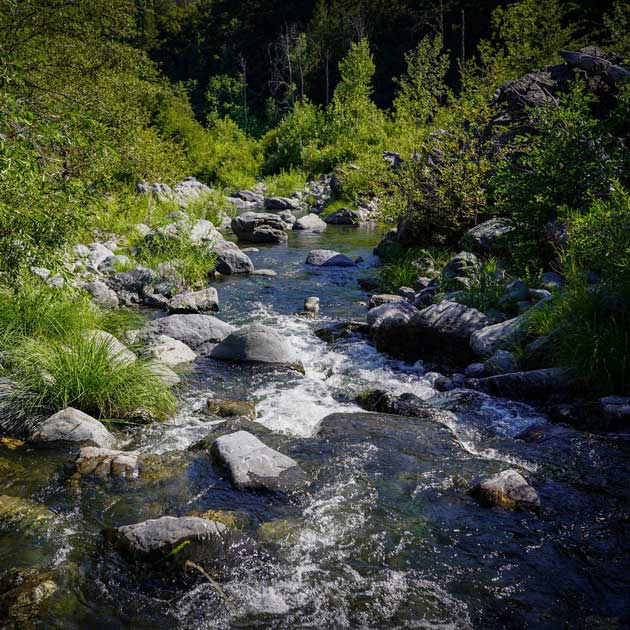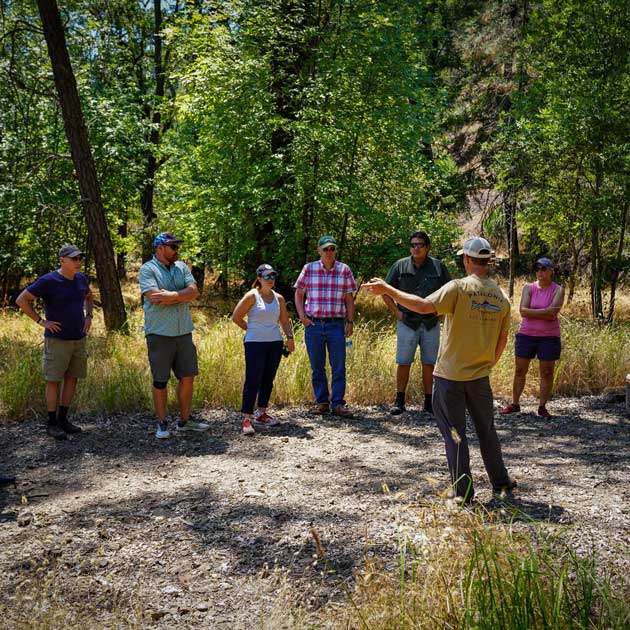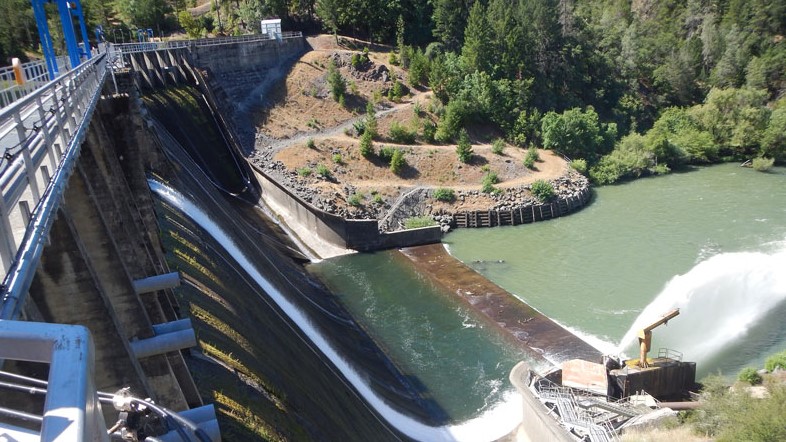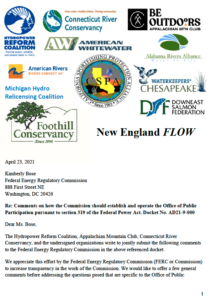Introducing CalTrout’s Lost Coast Project Manager & Update on Eel River Dams

CalTrout is pleased to introduce Charlie Schneider in the newly established role of Lost Coast Project Manager. With Charlie’s conservation non-profit background and expertise on fish and natural resource issues in California, he is well suited for this position which entails building CalTrout’s work capacity between the Russian and Eel river watersheds, continuing CalTrout’s efforts to free the Eel River and decommission the Potter Valley Project, and involvement in the California Salmon & Steelhead Coalition seeking protections for fish and rivers, of which CalTrout is a partner.
CalTrout’s Communications team recently sat down to chat with Charlie about his new role, what led him to this field, and what he’s looking forward to working at CalTrout. After the interview, read on for an update on Potter Valley Project and how CalTrout is involved.
Q&A with Charlie Schneider, CalTrout’s Lost Coast Program Manager
CalTrout (CT): Tell us about your background and what led you to working in conservation.
Charlie Schneider (CS): I grew up in Fort Bragg, CA, which is pretty rural and as a result spent a lot of time outside in the woods and on rivers which led to my fascination and appreciation for wild fish. In junior college, I took a natural resource management class which really sparked my interest and led me to double-majoring in Environmental Studies and Geography. My environmental education really engrained in me the notion that protecting watersheds as a whole is incredibly important not just for saving fish, but for the benefit of all.
After undergrad I had started fly fishing a bunch and got more interested in fisheries conservation and got connected to my local Trout Unlimited (TU) chapter where I eventually became Chapter President. I also went back to school, pursuing a graduate degree in Natural Resources/Fisheries Management. Between my volunteering with TU and my graduate program, I made a lot of friends and started doing projects. It was a perfect combination of being excited for this work, getting opportunities to be involved, and trying to learn as much as I could. I got quite involved with the Northern California fisheries conservation community and learned a lot about all the people and organizations doing this work, including CalTrout.
CT: What inspires you to work in the fish conservation field?
CS: Through my education and later experience, I realized salmon are not just really neat and something I like to fish for, but are incredibly important watershed health indicators. If we want healthy rivers and clean water, we need to focus on the health of salmon.And it’s not just about saving fish. It’s about fishing with your family, swimming in rivers during summer, and being outside in a place that you are connected to and proud of. My desire to conserve and restore natural places was informed a lot by my dad and grandparents who told me their first-hand experiences and knowledge of what the land and rivers used to be like. So I’m working to bring it back. I want to make sure we have places that are in good shape for my kids and future generations.

Upper Eel Watershed by Mike Wier.
CT: Why do you enjoy working at CalTrout?
CS: It’s great to be part of such a large organization, especially one that’s growing so much. There are good opportunities to collaborate with all the CalTrout staff from the different regions. It’s neat to work with people that have similar projects and face similar challenges, but we’re all focused on the mission to recover fish.I love learning about all the diverse projects we’re working on across the state. The breadth of work we’re engaged in is pretty amazing. I really admire CalTrout’s regional model. In my mind, place is key when it comes to conservation. Having staff that live in the places they work and are trying to protect, and being part of the community there, is critical to getting projects done and building trust in our work.

Charlie leading tour of Upper Eel watershed.
CT: Describe your role with CalTrout.
CS: Most of my job is focused on restoration of the Eel River which I am thrilled to be a part of. The Eel is such a special river in California and is a place where we have one of the best opportunities to recover salmon and steelhead. Reconnecting the Eel River headwaters is a big piece of the restoration puzzle because it is such a unique and special place, offering good cold water flows in summer and even through the last three years of drought. Seeing wild trout in the headwaters for the first time, in one of the hottest driest years on record is super motivating. This is where fish want to be, we just need to open the door so they can get there.
To that end, a big part of my work includes managing CalTrout’s involvement in the removal of the Eel River dams (Potter Valley Project) and engaging in stakeholder outreach; I’m working to build the relationships needed to participate in this project at such a large scale. The ultimate goal is to remove the dams which we know is what is best for the fish and find solutions that will work for as many stakeholders as possible.
Another part of my job is working with CalTrout’s Legal-Policy team at the Capitol in Sacramento, focusing on bigger picture conservation work─ how to fund those projects, how to make it easier to get work done, and how to develop policies that will make our work durable. We want to ensure long-lasting gains, not just the small victories.
CT: How is it working on such a large undertaking as the Potter Valley Project?
CS: The Potter Valley Project is a tough problem to solve. Ultimately, we know what the fish need and there is plenty of science to back that up, but it’s really the social, political, and values questions that are the tough part. Dam and transbasin diversions like the PVP create really stark winners and losers. Fortunately, we’re in a position now where PG&E is losing so much money on the dams they want to get rid of them and that upsets the status quo in a way we hope can be productive in rebalancing who this Project does and doesn’t work for, because it certainly hasn’t worked for downstream communities on the Eel River nor for salmon and Steelhead and lamprey. There are a lot of people that the PVP touches, including indigenous peoples that have all too often been marginalized when it comes to making decisions about what happens to the river, but I do think there is real opportunity to work together toward a common goal for the region that allows everyone to be proud of how we are taking care of our rivers and the people that rely on them.
Thank you Charlie for the interview and congratulations on the exciting new role with CalTrout!

Scott Dam on the Eel River, part of the Potter Valley Project.
Update on Potter Valley Project
CalTrout along with our conservation, tribal, and other NGO partners in the Eel River watershed have been actively and strongly pursuing the decommissioning and removal of two dams on the Eel River that make up PG&E’s Potter Valley Project (PVP).
Progress was seen in April of 2022 with the expiration and non-renewal of PG&E’s 50-year license for PVP. This is the first step towards dam removal, but ultimately it is up to the Federal Energy Regulatory Commission (FERC), the agency that regulates hydroelectric projects in the U.S., to issue the final order to PG&E that will allow them to surrender the license and decommission the project. Until then, FERC has issued a renewing annual license for PG&E to continue operating PVP under its current terms until decommissioning is complete.
However, PG&E’s continued operation of the project still leaves the Eel River and its fish still in harm’s way and struggling to survive. Although the Eel River historically boasted some of the largest salmon runs in California, the river’s salmon and steelhead populations are all listed as threatened under the Federal Endangered Species Act. Harming ESA-listed fish is a federal crime.
Likely in response to CalTrout and other groups’ protest on PG&E being allowed to still operate the project despite violating the Endangered Species Act, FERC announced in December 2022 that they will consider amending PG&E’s annual license for the Eel River dams. We are hopeful that the amendments will include conditions for protecting the Eel River’s federally endangered fish until the project is decommissioned.
CalTrout continues to stay closely engaged with the situation and is working with FERC and other stakeholders to make sure PG&E is held accountable for the damage they have caused to the Eel River. We will continue to demand that PG&E take steps to protect the Eel River’s fish while they work through the decommissioning process and work toward a timely final outcome that includes dam removal.
There is still a lot of work to do to remove these dams and free the Eel River and we will need stakeholder support along the way.
How to Get Involved
To stay active and engaged, we encourage you to sign up for Action Alerts on FreetheEel.org. This is the best way to learn about PVP updates and when we’ll need your help.
If you are a resident in Humboldt, Lake, Mendocino, or Sonoma counties, you can help right now by writing to your elected officials letting them know that dam removal must be part of decommissioning the Potter Valley Project.
Cover photo by Mike Wier.
The post Introducing CalTrout’s Lost Coast Project Manager & Update on Eel River Dams appeared first on California Trout.


